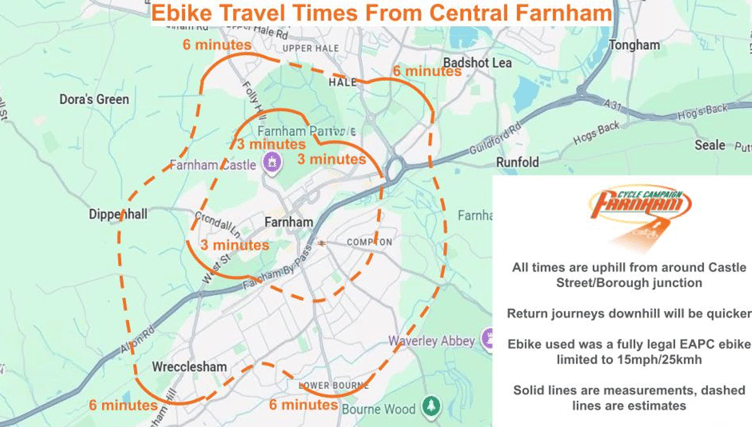As we grind our way through the £15 million Farnham Infrastructure Programme (FIP), we have now reached the point where the road system is pretty much complete.
Yes, pavement widening and resurfacing will continue for another year, but the transport network isn’t going to improve significantly. This is as good as it gets for car drivers.
But surely this huge amount of money has made things better in preparation for the seven new housing estates coming? There will be some further restrictions caused by The Borough being converted to a single lane, which will slightly restrict traffic flows when it’s finished, but sadly it appears that nothing from now on in the FIP will make things easier for motorists.
No bypasses are planned and no new cycle tracks have been delivered to allow people to leave cars at home. And, whilst they have finally published their long term plans for new cycle tracks around the outskirts of Farnham in the updated Local Cycling and Walking Infrastructure Plan (LCWIP), there won’t be any delivered in the current FIP project, despite our many requests.
The publication of this LCWIP document was delayed by 20 months due to arguments between elected councillors about what would be included. We find it frustrating that detailed public workshops were held in 2023 to collect the public’s views and then there were attempts to make changes, behind closed doors, in 2024 and 2025.
Too many decisions about transport in Farnham are made in secret, and without the public being told the reasoning. The FIP Board only makes minor decisions in public.
We are also disappointed that Farnham still does not offer local people who live outside of walking distance an easy choice of how they can get into town. Buses are few and far between, with timetables shredded during road congestion and there are still no new cycle tracks to date.
We have published on our website five surveys of local people’s views on cycle tracks and all showed a significant number of people would like to cycle into town, if there was a safe way to do so for some of their journeys. This would benefit local shops and cafes, and help employers’ productivity. Nationally, the cost of road congestion is £7.7 billion per year, averaging 62 hours per driver of lost time. Cycle tracks can reduce congestion.
One piece of good news is that the latest cycle and walking plans in the LCWIP are promising to eventually deliver some useful cycle routes based on the public workshops’ recommendations, although it is disappointing that current councillors decided not to allow any new routes intended to provide access to the town centre.
Unlike Brightwells, local council tax will not be used for the build, which is a relief. And relief is what Farnham needs, from car congestion so giving people a choice of leaving their car at home and cycling into town can only be a good thing. Even if you don’t want to cycle yourself, if others do, congestion reduces.
Finally, it is surprising to many non-cyclists how far you can get on an e-bike during the rush hour as shown in our map and Facebook page.





Comments
This article has no comments yet. Be the first to leave a comment.